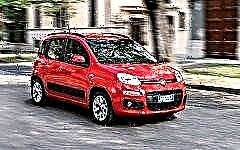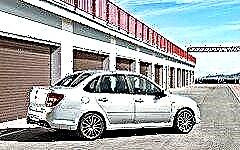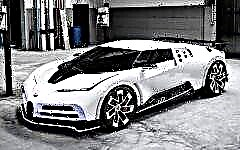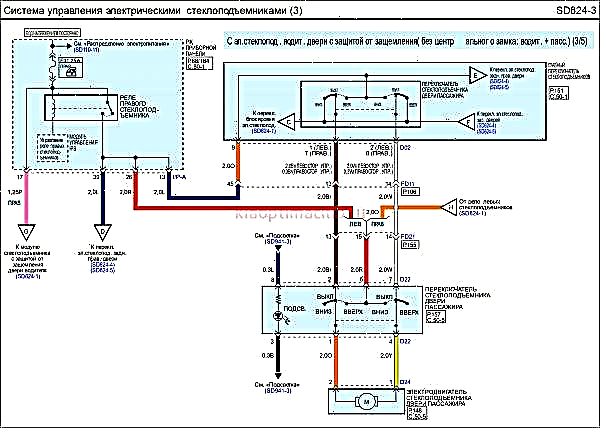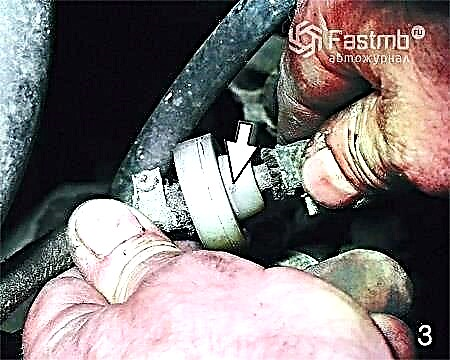
The content of the article:
- Varieties of spare parts
- Are non-original parts so scary and what are their features?
- How to identify a fake part
Installing a fake spare part on a car can lead to serious damage and costly repairs, not to mention the fact that such products do not differ in durability. But first you need to figure out which part is considered fake, and which is an ordinary duplicate.
Varieties of car parts

There are three types of spare parts:
- Original... In fact, the original is what is installed on the car during the assembly process. Everything else can be ranked as analogs. But in reality, this category also includes spare parts produced by the manufacturer some time later, after the next car model has entered the market.
- Analog (or duplicate)... Identical to the original, differing only in the identification number. This category includes the products of spare parts manufacturers. Their products are in no way inferior to original parts, and sometimes even surpass them in quality indicators. But the prices for such goods are several times lower.
- Fake. But here everything is more complicated. Fakes, in fact, include everything that is manufactured by another company and produced under the original brand name. Basically, motorists refer to this category as products from China, Taiwan and other similar countries, which they do not trust.
But this classification is arbitrary. Sometimes a fake is not such, and even more often its quality is in no way inferior to the original or branded counterpart. In recent years, many reliable spare parts companies have opened factories in countries where labor and technology are significantly cheaper than in Europe. These are mainly China, Brazil, Turkey, etc. Many auto concerns have such branch plants - Ford, Huandei, Bosch and others.
Many affiliates legitimately manufacture products under their own personal logo. For example, there was a fierce controversy over counterfeiting around Lemforder a few years ago. The problem is that the company's logo is an owl in a triangle. But in recent years, the market has increasingly begun to come across parts with a stamp in the form of the letter L in a triangle. Auto experts immediately recorded all such parts in the category of low-grade fakes.
In fact, the company has more than 100 factories around the world (information about the country of origin is indicated on the packaging) and only five of all use an owl as a logo, the rest have an L in a triangle.
Therefore, before enrolling a name in the category of shrub products, it is worth learning more about the company and its affiliated factories.
Are non-original parts so scary and what are their features?

Some car owners only use the original for their car, others prefer good (and sometimes bad) copies. And each has arguments in favor of his position.
Pros of original spare parts
- Quality. Manufactured in accordance with all standards and norms, the possibility of a factory defect is extremely small.
- Manufacturer's warranty. If something is still wrong with the part, then this issue can be resolved using the warranty.
- The original part will fit the car exactly, you just need to choose taking into account the identification number.
Cons of the original
- High price. Moreover, you will have to overpay not so much for the product itself as for the brand name.
- The need to wait a long time for delivery. If the required part is not in stock at the dealer, delivery may take several weeks at best. At worst, months. The number of names of auto parts is huge, in the warehouses there are usually only the most demanded ones.
Non-original parts from official production can be distinguished by marking and identification number. Analogs are made by companies that produce auto parts for a specific category, for example, steering, braking, suspension, etc.
Advantages of analogues
- Low cost. In this case, you will not have to overpay for the official brand. Although sometimes there are copies that are more expensive than the original.
- Quality. In terms of their quality characteristics, such spare parts are not inferior to the original ones, and sometimes even surpass them.
- Always available. There are a limited number of official dealers in the country, so finding the right product can be a lot more complicated. But there are more than enough "market suppliers" and the choice of products is striking in its variety. You can pick up a part of any brand and in different price ranges.
Cons of analogues
- There is a high risk of buying a low-quality fake. It is much easier to sell a fake part under the brand of an auto parts company than under the brand of an automobile company.
- The possibility of manufacturing defects is much higher.
- Installation in a warranted vehicle will void the warranty.
In recent years, China (and some other countries) has developed a network of serial production factories. Such parts are sold under their own, unknown name and can be of decent quality. Or "indecent", as luck would have it.
This budget option came in handy for people whose finances do not allow purchasing expensive spare parts. Therefore, before taking the risk, it is worth monitoring Internet forums and looking for responses from the owners on this or that suspicious detail. This, of course, will not save you from a defective purchase, but it will reduce the risk.
Counterfeits have one plus - low cost. Their durability can sometimes turn out to be no worse than that of branded products, but not every car owner dares to check this.
How to identify a fake car part

Counterfeits are made very poorly and are sold under the brand name. Most often, Asian craftsmen are engaged in such piracy, who do not particularly care about the compliance not only with the standards of the part, but also with the packaging.
In order to protect yourself from purchasing fake auto parts, you should pay attention to several points.
Shop
- You should not make a purchase in small outlets of a dubious nature.
- Too low a price is a reason to bypass the product.
- The seller must provide a certificate for each product. If its authenticity is suspicious, it is better to find another store.
Package
A close inspection of the packaging reveals a fake, at least an Asian one. Apparently, streaming stamping leaves no time for correct design. What to look for:
- The quality of the box. It should be dense, made of high quality cardboard / plastic or other material. If the spare part is packed in polyethylene, you should pay attention to the density of the material and the sealed seams. Thin, easily tearing film, uneven and fragile seam are proof of a counterfeit part.
- Coloring. Brands tend to pack their products in standard color packages. All changes and features can be viewed on the manufacturer's official website.
- The correct spelling of the brand name. Either the Chinese with the Latin alphabet are bad, or this is a subtle calculation, but the fake brand often has "mistakes" in spelling - one letter is missing or replaced with a similar one. Of course, this is no longer a fake, but a product with a similar name, but the expectation is that the consumer will not notice this nuance.
- Color design of the logo and brand name. Well-known companies usually design them in a certain color scheme.For example, Bosch writes the brand name in red and makes the logo black. Handicraft craftsmen often do not pay attention to such subtleties, so you can often find fakes on sale, where Bosch is written in black to match the logo.
- Visual design of the brand and logo. For example, the same Bosch company makes the letters s and h in the name slightly beveled - their lower tails are slightly cut off. Counterfeits, as a rule, are inscribed in ordinary Latin letters. Therefore, you should pay attention to the identity of the inscription and the logo design. A sample can be found on the company's website.
- Range. Parts companies usually specialize in a specific product. The same Bosch, for example, does not produce oil seals, but it is quite easy to find them on sale. Therefore, it is worth checking the manufacturer's official catalog and the range of products offered. Everything else is fake.
Detail
More responsible scammers deal with registration more seriously. Even if the packaging seems to be real, do not be too lazy to inspect the part itself. What to look for:
- Appearance. The part should look neat - no smudges, burrs, loose fit or other unattractive things.
- Brand. The part must be equipped with a logo - clear, corresponding to the brand name. If it is not identical, blurred or poorly distinguishable, then the part is most likely fake.
- Threaded connections. If there are any, then they should fit snugly, unscrew evenly, but tightly. The thread itself should be light, shiny and clear.
- Places of soldering. Welding joints of branded firms have traces of heat treatment. If there are none, then it is possible that the elements were connected with an adhesive. And this is unacceptable.
- Factory markings. Each spare part, be it an original or a duplicate, is marked. Otherwise, it is a fake.
To protect yourself from a wrong purchase, you will have to spend some time studying the raw materials with which the product will then be compared. In addition to universal mistakes, would-be counterfeit manufacturers do not take into account the individual characteristics of spare parts of specific brands. Therefore, before buying, you should pay attention to how the part looks for a particular car and how it is assembled. But in most cases, general information is sufficient to detect a fake.

